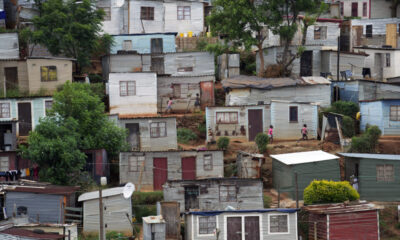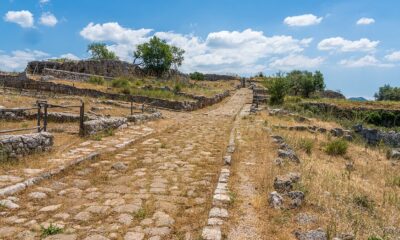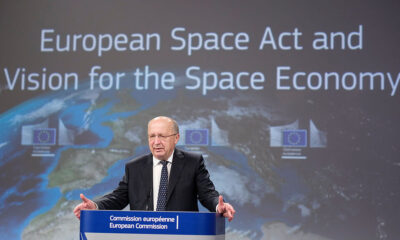Science
Europe Uncovers Hidden Soil Pollution to Combat Contamination

Across Europe, a significant initiative has emerged to address a critical environmental issue: soil pollution. The continent is actively uncovering a legacy of hidden contamination that poses serious health risks. This movement encompasses various countries, including notable developments in Denmark, where the first crisis related to per- and polyfluoroalkyl substances (PFAS) has been documented. Scientists and citizens alike are now engaged in a collective effort to map and mitigate these unseen pollutants.
New Initiatives and Discoveries
Recent soil-mapping initiatives are at the forefront of this environmental challenge. By employing advanced technologies and scientific methods, researchers are identifying contaminated sites that were previously overlooked. These programs not only aim to detect pollutants but also to establish a comprehensive understanding of the extent of contamination across different regions.
The European Union has recognized the importance of these efforts, providing funding and support for various projects aimed at soil remediation. For instance, a multi-national collaboration has been initiated to develop standardized soil mapping techniques that can be implemented across member states. This initiative reflects a growing awareness of the need for a cohesive strategy in tackling soil pollution.
The implications of these discoveries are profound. Contaminants like PFAS have been linked to serious health issues, including cancer and reproductive problems. As communities become more aware of these risks, the demand for action is intensifying. Citizens are increasingly pushing for transparency regarding local soil conditions, which has led to more public discussions about environmental health.
Community Engagement and Awareness
In many regions, local communities are taking the lead in advocating for cleaner environments. Grassroots organizations are forming to raise awareness about soil pollution and its potential impact on health. These groups are conducting educational campaigns and organizing community clean-up events, fostering a culture of environmental stewardship.
One notable example is the work being done in France, where citizens have collaborated with scientists to conduct soil testing in urban areas. The results of these tests have prompted local governments to take action, including the implementation of stricter regulations on land use and pollution control. This collaboration illustrates the power of community engagement in addressing environmental challenges.
As these initiatives gain traction, it is clear that Europe is beginning to confront its environmental legacy. The importance of maintaining healthy soil cannot be overstated, as it plays a vital role in agriculture, biodiversity, and overall ecosystem health. The current efforts to map and remediate contaminated land reflect a significant shift in how pollution is perceived and managed.
Moving forward, the successful implementation of these soil-mapping initiatives will depend on continued collaboration among governments, scientists, and citizens. By working together, they can create a safer environment for future generations. The fight against invisible soil pollution is just beginning, but the momentum is building, and Europe is determined to take decisive action.
-

 Technology4 months ago
Technology4 months agoDiscover the Top 10 Calorie Counting Apps of 2025
-

 Health2 months ago
Health2 months agoBella Hadid Shares Health Update After Treatment for Lyme Disease
-

 Health3 months ago
Health3 months agoErin Bates Shares Recovery Update Following Sepsis Complications
-

 Technology3 weeks ago
Technology3 weeks agoDiscover 2025’s Top GPUs for Exceptional 4K Gaming Performance
-

 Technology4 months ago
Technology4 months agoDiscover How to Reverse Image Search Using ChatGPT Effortlessly
-

 Technology2 months ago
Technology2 months agoElectric Moto Influencer Surronster Arrested in Tijuana
-

 Technology4 months ago
Technology4 months agoMeta Initiates $60B AI Data Center Expansion, Starting in Ohio
-

 Technology4 months ago
Technology4 months agoRecovering a Suspended TikTok Account: A Step-by-Step Guide
-

 Health4 months ago
Health4 months agoTested: Rab Firewall Mountain Jacket Survives Harsh Conditions
-

 Lifestyle4 months ago
Lifestyle4 months agoBelton Family Reunites After Daughter Survives Hill Country Floods
-

 Technology3 months ago
Technology3 months agoUncovering the Top Five Most Challenging Motorcycles to Ride
-

 Technology4 weeks ago
Technology4 weeks agoDiscover the Best Wireless Earbuds for Every Lifestyle





















